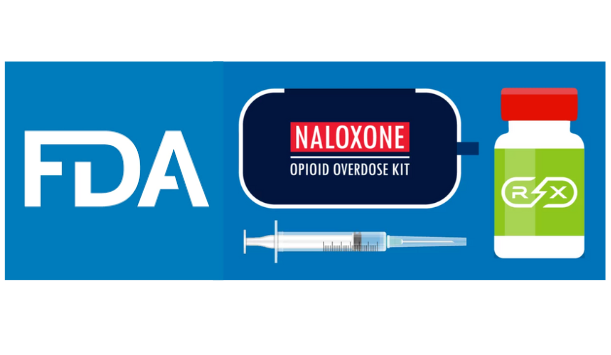FDA Approves Over-the-Counter Naloxone Nasal Spray for Opioid Overdose

Of all over-the-counter life saving medications, perhaps none is as important today as naloxone. This drug, which has been used for decades by first responders and medical professionals to reverse opioid overdoses, is now available thanks to FDA's approval of an Abbreviated New Drug Application (ANDA) for naloxone hydrochloride (Naloxone HCI) nasal spray at 4mg.
Whether or not this approval will make a difference in the opioid crisis, which has caused over 105,000 deaths in 2023 alone, is yet to be seen. However, it's a step forward in making this life saving drug more accessible to the general public.
Amneal Makes Waves
Amneal has been in the business of producing generic medications and products for over 20 years. This pharmaceutical company has even partnered with CalRx, which is California's initiative to make drugs more accessible by offering generic brands.
Amneal already has 260 products in its catalog, and Naloxone HCL nasal spray was just added to that list. The drug is meant to be used as an emergency treatment for suspected opioid overdose, and the FDA has approved it for over-the-counter use as of April of this year.
What is Naloxone?
Most people have heard of the drug Narcan, which is the brand name of naloxone. However, there are several different forms of Naloxone, including injectable forms like Zimhi. No matter what brand name or form, naloxone is an opioid antagonist that works by binding to opioid receptors in the brain and blocking the effects of opioids.
These effects include symptoms such as:
- Decreased or shallow breathing
- Unresponsiveness or unconsciousness
- Slow heart rate
- Blue skin/lips/fingernails (cyanosis)
The great thing about Naloxone is that, no matter its format, it works quickly (usually within 2-3 minutes) to save lives and reverse the effects of an opioid overdose. By reverse, we mean that it can restore normal breathing and consciousness to a person experiencing an overdose.
How is Naloxone Administered?
As mentioned, naloxone comes in various forms, but the most popular and widely used form is Narcan, its nasal spray form. Being available in a nasal spray makes it much more user-friendly for the general public to administer, as no medical training or experience is required.
All you need to do is insert the nozzle into the nostril and push the plunger down, delivering a dose of naloxone (usually 4mg for Narcan and 8 mg for Kloxxado) to the person overdosing. If one nasal spray dose doesn't seem to work within 2-3 minutes, and the person continues to be unresponsive, you'll be advised to administer yet another dose into the next nostril.
Narcan Vs. Naloxone Hydrochloride (Naloxone HCI)
While Narcan is a well-trusted and widely used brand name of naloxone, this doesn't mean it's the only option when it comes to using a nasal spray form of naloxone to reverse an overdose. Since the FDA approved Amneal's Naloxone HCL nasal spray in April of this year, there are now more choices available for over-the-counter use!
Will Generic Brands of Naloxone Work Just As Well?
In short, yes! The active ingredient in all formulations of naloxone is the same - naloxone hydrochloride. This means that any brand or generic form will work just as effectively in reversing an opioid overdose. In addition, according to the FDA's generic drug facts, all brands of generic medications must be the same as brand name medications in terms of:
- Dosage
- Safety
- Effectiveness
- Strength
- Stability
- Quality
- Route of administration
The one caveat, however, is that users will still experience the same side effects with any brand of naloxone. Typically, these include withdrawal symptoms and potential agitation in the person being revived.
What Are The Differences Between Narcan And Naloxone HCI?
As mentioned before, both Narcan and Naloxone HCI contain the same active ingredient - naloxone hydrochloride. However, there are some differences between these two nasal sprays that users may want to consider.
